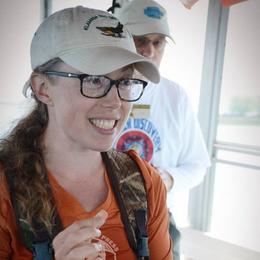As winter begins across the Great Lakes region, bird watchers are eagerly awaiting the arrival of winter finches that are moving in large numbers outside of their typical range.
The latest Winter Finch Forecast from The Finch Research Network predicts that Purple Finches, Common and Hoary Redpolls, Pine Siskins, and nomadic White-winged Crossbills will move through the region this winter. As crops of berries, seeds, and cones deplete throughout the winter, we could see some late movements of Evening Grosbeaks, Pine Grosbeaks, and Red Crossbills into the Great Lakes, though most movements will likely occur west of Lake Superior.
These birds depend on cone and berry crops of the boreal forest for food each winter. When there is not enough food, they will migrate outside of their usual wintering grounds. This unusual migratory movement is called an irruption, which will bring northern finches south into lower Ontario, the Great Lakes, and beyond. Irruptions don't happen every year, which makes winter finch sightings this year particularly magical.
Learn how to identify, find, and attract a few of these winter gems:
A small finch, males have a raspberry red head, breast and back. Females have thickly streaked undersides, with a whitish eyebrow and dark line down the side of the throat.
- Find them in wooded and semi-open areas, including forests, suburbs, swamps, and overgrown fields.
- Attract them with sunflower seeds, nyjer, and millet. Use small and large tube feeders or hopper feeders. Plant native seed-producing trees and grasses.
Common and Hoary Redpolls
Common Redpolls, unsurprisingly, are more common than Hoary Redpolls. Both are small finches with a short conical yellow bill. Common Redpoll males and females have brown and streaked backs, sides, and a small red patch on the crown. Males will also have a pink-washed chest. Hoary Redpolls are paler overall, with less streaking, and a smaller bill.
- Find them in semi-open country, including woodland edges and brushy or weedy fields.
- Attract them with sunflower seeds and nyjer. Use small and large tube feeders and hopper feeders. Plant native seed-producing trees and grasses.
Behaves like a Goldfinch, but is brown and streaked like a sparrow. Has a sharp, pointed bill and subtle yellow edges on wing and tail feathers.
- Find them in semi-open areas, woodland edges, and weedy fields.
- Attract them with sunflower seeds and nyjer. Use small and large tube feeders and small hopper feeders. Plant native seed-producing trees and grasses.
Colorful, chunky, and large-billed. Males are yellow and black with a bold white patch in the wing. Females are mostly gray with a yellow wash on the neck and white and black wings.
- Find them in noisy flocks at bird feeders, in box elders, maples, woodlands, and fruiting shrubs.
- Attract them using hopper or large tuber feeders with sunflower seeds. Plant native fruiting shrubs.
Large, heavy-chested finch with a thick and stubby bill. Males are rosy red and gray while females are golden yellow and gray. Both males and females have two white wing bars and are very tame.
- Find them in deciduous trees, especially fruiting trees, pine groves, and other conifers.
- Attract them with suet, sunflower seeds, or fresh fruit. Use hopper or large tuber feeders. Plant native fruiting shrubs.
Red Crossbills and White-winged Crossbills
Less common, these medium-sized finches have a crisscrossed bill. Red Crossbill males are red overall with dark brown wings. Females are yellowish with dark, unmarked wings. White-winged Crossbill males and females are similarly colored, but have two bold white wing bars that Red Crossbills lack.
- Find them in wandering flocks in evergreen woods, conifer plantings, or suburbs.
- Attract them by planting native conifer trees.
ABOUT MI BIRDS
MI Birds is a public outreach and engagement program created by Audubon Great Lakes and Michigan Department of Natural Resources, which aims to increase all Michiganders' engagement in the understanding, care, and stewardship of public lands that are important for birds and local communities.
*Please note this piece was updated 11/2/23 to reflect the 2023-2024 winter finch forecast.




